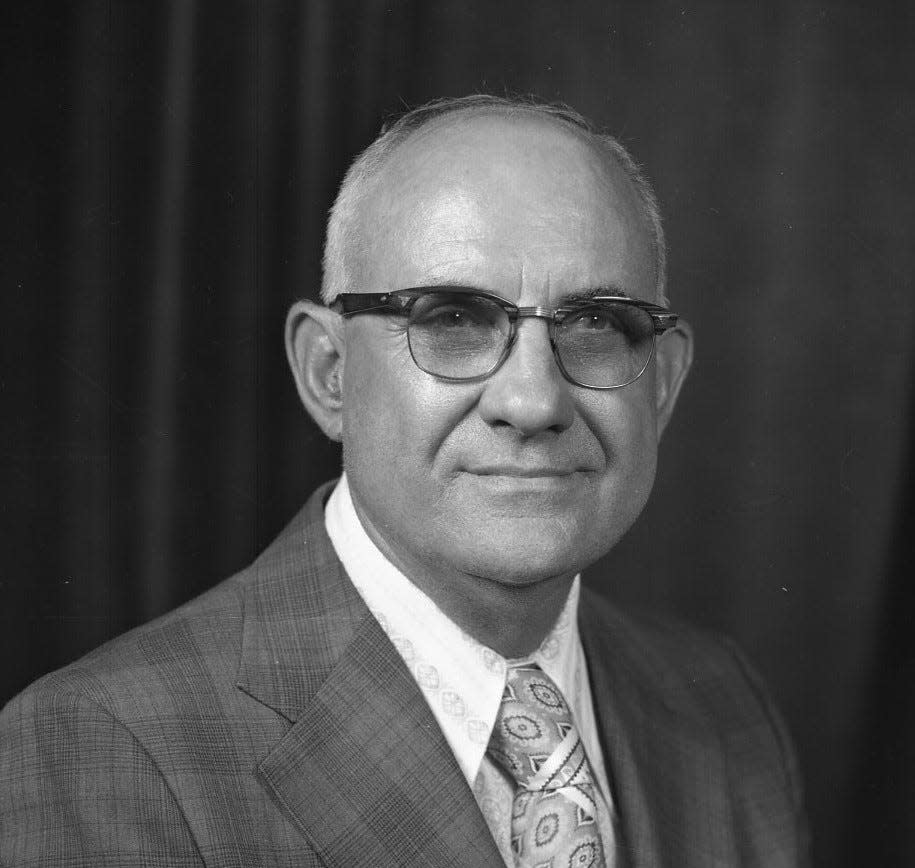Weston Wednesday: An interview with Mary Ellis of Ochelata, Part 2

Editor's Note: In collaboration with the Bartlesville Area History Museum, the Examiner-Enterprise has revived the late Edgar Weston's 'Revisiting the Past' columns that ran in the newspaper from 1997-99. Weston's columns recount the history of Bartlesville as well as Washington, Nowata and Osage counties.
The Morrison's attended church held in the log schoolhouse located in their area, and at the old Delaware Baptist Church, located near the present site of the Hillcrest Country Club, three miles south of Bartlesville.
The Indians knew little about the Christianity our preachers of today teach, but they were very religious-minded people. They worshiped a supreme being, and were very sincere in their belief. They prayed to their God for rain, wind, sun, etc., and danced and sang.
Mary's maternal grandparents came to Indian Territory on the Emigration Act. Her grandmother McCoy, a half-breed Cherokee, was a missionary and teacher in Dwight's Mission, located in Arkansas, during the Civil War. She took her children to this mission, where she and they remained until the close of the war.
Education was not as easily obtained in the early days as it is today. They had no handsome brick and stone, modern school buildings with steam heat then. The country schools then were not like the present consolidated district schools, with buses to transport them to and from school, but the school houses were built of logs, and in some localities, schools were held in dugouts. If you lived two or three miles from school, you walked.
The first school Mary attended was at Lenapah, in Nowata County and her first teacher was Miss Nettie Rogers. There was a government school located at Nowata where she later attended.
Mary only recalled two ferries in her immediate locality. One was the ferry across the Caney River at the north edge of Bartlesville and the other was a small, one that crossed the Verdigris River, east of Nowata, below Alluwe. This boat was operated by Mr. Jolley.
The Greenleaf Ford was across the Verdigris River. Mary could not give the exact location of this ford, but it was not far from the Morrison home and her father used to drive his cattle across the river at this ford.
Horse races were a great sport in the early days, and were enjoyed by both old and young. Mary attended an exciting horse race near Nowata one time. However, her father took them home at the most exciting moment. Mr. Beal brought a horse from Texas, known as Texas Tom. Tyne Walker and Jeff Laffett, local men, owned the fastest horse in the vicinity, known as Popcorn. Needless to say, they were all betting on Popcorn and would have been much disappointed if he had lost. Popcorn seemed to sense this for he won with a walk away.
The two jockeys had an argument about the race and when the Texas jockey accused our home man of being crooked it was settled in the old fashioned way - a genuine fist fight. The Texas jockey threatened to kill the hometown man, causing considerable excitement, but the trouble was settled without bloodshed.
A permit from the Cherokee Nation was required to hunt in this part of the country. There was a great quantity of wild game here in the early days. There were deer, wolves, panthers and different species of cats. The smaller game and birds were raccoon, opossum, prairie dog, turkey, quail, pheasants, and prairie chicken.
The United States government allotted land to each of the Five Civilized Tribes, the Choctaw, Chickasaw, Creek, Seminole and Cherokee Indians. The land was first appraised according to the location of the land and the valuation.
Each individual was filed and different locations assigned; the roll was made and the land allotted accordingly. Mary's allotment was 80 acres located northeast of Ochelata, in what is known as the Johnstone bottoms. It was filed at Vinita. In 1893, the Cherokee Strip land was sold and she received her payment at Vinita, in approximately 1902-1903.
There was a secret organization among the Indians, known as the "Pen Indians". They were a wild bunch who committed many bloody crimes, about the time of the outbreak of the Civil War. Mary's great-grandfather and his two sons were murdered by these demons. Her grandfather was district sheriff. His father-in-law owned a store where this fiendish murder took place. When he found that he was surrounded by the Indians, he crawled under the house, where he hid until he had an opportunity to run across the short passage between the house and store. They fought a losing fight and were murdered. The Pen Indians were Republicans. After this murder, Mary's great-grandmother and all the generations in her family up to the present time, have been Democrats.
During the war, the "Bushwhackers," another outlaw gang, and the Pen Indians, caused much suffering among the people by robbing them of their stock, food and anything else of value. The Bushwhackers came to Mary's grandmother's home, seized her feather beds and pillows, ripping them with a knife and opening them to the wind.
Mary's grandmother was a nurse among the Indians, and she remembers when she was a child being very much interested in watching her make teas and medicines from herbs, roots, barks and leaves.
The Indian children of the reservations and in Indian settlements wore loose dresses and shirts, all made alike. They all wore long hair and it was difficult to determine the boys from the girls. The boys were called "shirt tail boys".
Mary knew the late Uncle Bud Ledbetter, who was an outstanding United States Deputy Marshall of the Indian Territory.
This article originally appeared on Bartlesville Examiner-Enterprise: Weston Wednesday: An interview with Mary Ellis of Ochelata, Part 2

